
System Shock 2 is a 1999 action role-playing survival horror video game designed by Ken Levine and co-developed by Irrational Games and Looking Glass Studios. Originally intended to be a standalone title, its story was changed during production into a sequel to the 1994 game System Shock. The alterations were made when Electronic Arts—who owned the System Shock franchise rights—signed on as publisher.

Vampire: The Masquerade – Bloodlines is a 2004 action role-playing video game developed by Troika Games and published by Activision for Microsoft Windows. Set in White Wolf Publishing's World of Darkness, the game is based on White Wolf's role-playing game Vampire: The Masquerade and follows a human who is killed and revived as a fledgling vampire. The game depicts the fledgling's journey through early 21st-century Los Angeles to uncover the truth behind a recently discovered relic that heralds the end of all vampires.

Minsc is a fictional character in the Baldur's Gate series of Dungeons & Dragons role-playing video games developed by BioWare and Larian Studios. He originated from the pen-and-paper Dungeons & Dragons sessions held by the lead designer of Baldur's Gate, James Ohlen, and was expanded upon by the game's lead writer, Lukas Kristjanson. His video game debut was in Baldur's Gate as a companion character who can join the player's party. He also appears in the sequel, Baldur's Gate II: Shadows of Amn, the expansion, Baldur's Gate II: Throne of Bhaal, the 2015 game Baldur's Gate: Siege of Dragonspear, the 2023 game Baldur's Gate 3, as well as in promotions relating to the titles. Minsc is voiced by Jim Cummings in his original video game appearances, and by Matt Mercer in Baldur's Gate 3.
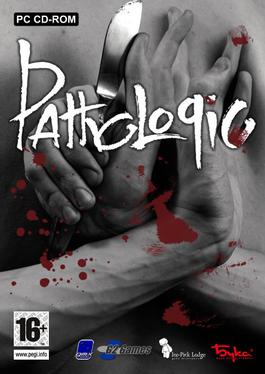
Pathologic is a 2005 survival game developed by Russian studio Ice-Pick Lodge. The game was released in Russia by Buka Entertainment in June 2005, followed by a localised English release from G2 Games and GMX Games in 2006. An updated version, Pathologic Classic HD, was developed by General Arcade, published by Good Shepard Entertainment, and released in October 2015. A remake was developed by Ice-Pick Lodge in the Unity game engine and released as Pathologic 2 in May 2019 by tinyBuild.

Prey is a 2017 first-person shooter video game developed by Arkane Austin and published by Bethesda Softworks. The game was released for PlayStation 4, Windows, and Xbox One on May 5, 2017.
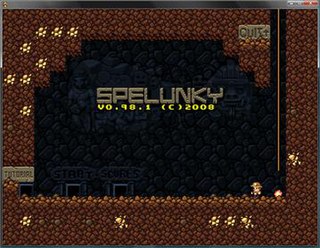
Spelunky is a 2008 source-available 2D platform game created by independent developer Derek Yu and released as freeware for Microsoft Windows. It was remade for the Xbox 360 in 2012, with ports of the new version following for various platforms, including back to Microsoft Windows. The player controls a spelunker who explores a series of caves while collecting treasure, saving damsels, fighting enemies, and dodging traps. The caves are procedurally generated, making each run-through of the game unique.

Dead Space is a science fiction/horror franchise created and directed by Glen Schofield. Dead Space was developed by Visceral Games and published and owned by Electronic Arts. The franchise's chronology is not presented in a linear format; each installment in the Dead Space franchise is a continuation or addition to a continuing storyline, with sections of the storyline presented in prequels or sequels, sometimes presented in other media from the originating video game series, which includes two films and several comic books and novels.

Perpetuum is a video game by Avatar Creations Ltd. It is a player-driven persistent-world MMORPG set in a science fiction ground setting. Players pilot customisable robots on various islands connected by several teleports. These islands are either alpha or beta/gamma, meaning players can freely engage each other.

Alien: Isolation is a 2014 survival horror game developed by Creative Assembly and published by Sega for PlayStation 3, PlayStation 4, Windows, Xbox 360, and Xbox One. Based on the Alien film series, the game is set 15 years after the events of the original 1979 film, and follows engineer Amanda Ripley, daughter of Alien protagonist Ellen Ripley, as she investigates the disappearance of her mother aboard the space station Sevastopol. Once inside, Amanda discovers that the station has fallen into disarray due to an Alien creature on the loose and must find a way to escape. The game emphasizes stealth and survival horror gameplay, requiring the player to avoid, outsmart, and fight enemies with tools such as a motion tracker and flamethrower.
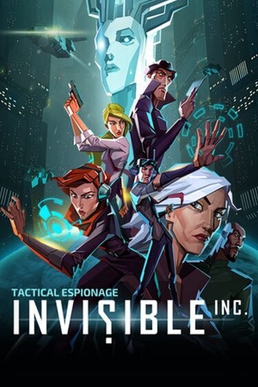
Invisible, Inc. is a turn-based tactics stealth game incorporating elements of roguelike gameplay, by Klei Entertainment. The player acts as the remote operator for an espionage agency that has come under attack from multinational corporations, and directs agents in covert missions, acquiring resources and support in order to enable relocation of the agency's computer system to a safe haven within a limited amount of time.

Return of the Obra Dinn is a 2018 adventure and puzzle video game created by Lucas Pope and published by 3909 LLC. It was Pope's second commercial game, following 2013's Papers, Please, and was first released for macOS and Windows before being ported to Nintendo Switch, PlayStation 4, and Xbox One a year later. Return of the Obra Dinn was praised for its gameplay, art style, and narrative; it won several awards including the Seumas McNally Grand Prize.

Sea of Thieves is a 2018 action-adventure game developed by Rare and published by Microsoft Studios. The player assumes the role of a pirate who completes voyages from different trading companies. The multiplayer game sees players explore an open world via a pirate ship from a first-person perspective. Groups of players encounter each other regularly during their adventures, sometimes forming alliances, and sometimes going head-to-head.

Stellaris is a 4X grand strategy video game developed by Paradox Development Studio and published by Paradox Interactive. In Stellaris, players take control of an interstellar civilization on the galactic stage and are tasked with exploring, colonizing, and managing their region of the galaxy, encountering other civilizations that they can then engage in diplomacy, trade, or warfare with. A large part of the game involves dealing with both scripted and emergent events, through which new empires alter the balance of power, powerful crises threaten the galaxy, or event chains tell the story of forgotten empires. It was released worldwide for Windows, macOS, and Linux on May 9, 2016 and for PlayStation 4 and Xbox One as Stellaris: Console Edition on February 26, 2019.

Hytale is an upcoming sandbox game by Hypixel Studios. Production began in 2015 by developers from the Minecraft multiplayer server Hypixel with funding from Riot Games, who later bought the studio in 2020. It is scheduled to release for Windows and macOS operating systems, as well as consoles and mobile devices.
Barotrauma is a survival-horror role-playing submarine simulator developed by Finnish studio Undertow Games and published by Daedalic Entertainment. Following an early access beta phase that began in 2019, the game was released for Windows, macOS, and Linux in March 2023.
A roguelike deck-building game is a hybrid genre of video games that combines the nature of deck-building card games with procedural-generated randomness from roguelike games.
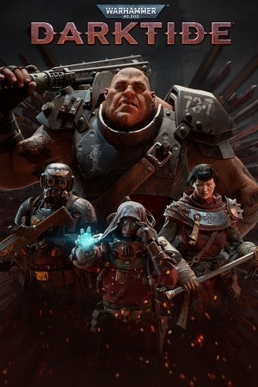
Warhammer 40,000: Darktide is a first-person action video game set in the Warhammer 40,000 universe, developed and published by Fatshark. It is a spiritual successor to the Warhammer: Vermintide series. It was released for Microsoft Windows on 30 November 2022. It also was released for Xbox Series X/S on 4 October 2023.

Space Crew is a real-time strategy video game developed by Runner Duck and published by Curve Digital. It was released on Microsoft Windows, OS X, Linux, PlayStation 4, Xbox One and Nintendo Switch on 15 October 2020. It is the sequel to the game Bomber Crew, released in 2017. An update, Space Crew: Legendary Edition, was released in October 2021, which featured a new campaign.
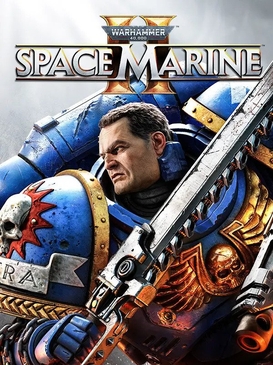
Warhammer 40,000: Space Marine II is an upcoming third-person shooter hack-n-slash video game developed by Saber Interactive and published by Focus Entertainment. A sequel to Warhammer 40,000: Space Marine (2011), the game is scheduled to be released for PlayStation 5, Windows, and Xbox Series X and Series S on 9 September 2024.























